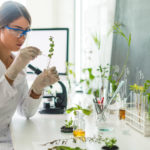The BBVA Foundation recognizes the promoters of the largest catalog of plant species
The BBVA Foundation has recognized the work of Sandra Díaz, Sandra Lavorel, and Mark Westoby with the Frontiers of Knowledge Award in the Ecology and Conservation Biology category has gone in this thirteenth edition to ecologists. The three researchers linked plant ecosystem function to their physical characteristics, and described how these broad traits relate together at global level.

Their pioneering work has solidified in a catalog of functional traits with information on some 200,000 plant species that is expanded and used by researchers around the world for such purposes as modeling the impact of climate change on ecosystems and identifying mitigation measures. The "trait ecology" championed by the three awardees is improving the design and effectiveness of studies to identify and quantify the ecosystem services that benefit humanity, and of biodiversity conservation efforts.
Focusing their research work on arranging each plant's ecosystem function along dimensions of measurable physical traits, such as height, leaf type or seed size, allowed them to locate patterns in the functional diversity of species at a global level. In a paper published in 2001, Sandra Díaz (Argentina, 1961) noted that “there is a growing consensus that functional diversity, or the value and range of species traits, rather than species numbers per se, strongly determines ecosystem functioning. But despite its importance, functional diversity has been studied in relatively few cases.” At that time, the three had met at various international conferences, each traveling from a distinct corner of the globe.

Sandra Díaz, BBVA Foundation Frontiers of Knowledge Award in the Ecology and Conservation Biology - BBVA Foundation
“We really connected,” said Díaz after learning about the jury’s decision, "and had a great time talking together about the relationship between biodiversity and function." It was from these conversations that the idea took shape to create a global database of shared knowledge, something "quite rare at the time in this field of research," remarked Sandra Lavorel (France, 1965).
200,000 plant species catalogued
In 2016, Nature published for the first time an article on their collaboration, noting it was the first attempt to classify functional biodiversity by reference to six physical traits. These traits have to do primarily with the size of plants and their components, such as seeds, and the workings of the ‘leaf economy’. Mark Westoby (United Kingdom, 1947) explains that "some leaves capture light very 'cheaply', that is, capturing a lot of light for the level of resources they invest, but at the cost of being relatively short-lived. At the other end of the spectrum you have relatively 'expensive' leaves with a low rate of return, but that last for a long time."
For Díaz, the great global catalogue of forms and functions set out in 2016 is "the first snapshot of the functional diversity of the Earth's vascular plants,” whose ultimate purpose is to understand the mechanisms that drive the functioning of each ecosystem. “Ecosystems are a machine where the cogs and the levers and the connecting rods are species. And so being able to understand how those pieces of machinery work is a prerequisite for being able to forecast the consequences of any kind of change in the environment, including those due to stressors of human origin,” explains Westoby.

Mark Westoby, BBVA Foundation Frontiers of Knowledge Award in the Ecology and Conservation Biology - BBVA Foundation
The success of the initiative exceeded all expectations, and today, the database contains 12 million entries, documenting the functional trait diversity of some 200,000 plant species.
Better responses against climate change
This knowledge, along with the database, is already being applied in the design of models to improve ecosystem adaptation to climate change. Lavorel explains that it has been shown, for instance, that slower growing plants are more resistant to drought, a phenomenon set to increase with global warming in regions like the Mediterranean. But at the same time, slower growing crops capture less carbon, so it is important to factor both variables into future adaptation plans.
Another research strand is the relationship between plants' functional traits and the production of foods. And one of the connecting threads is pollination: “A large proportion of the world's crops are pollinated by insects, says Lavorel, "and the traits of the flowers of these plants determine which insects will be able to pollinate them, which will ultimately influence their levels of production."

Sandra Lavorel, BBVA Foundation Frontiers of Knowledge Award in the Ecology and Conservation Biology - BBVA Foundation
Understanding each plant's function allows to model how the ecosystem will change in response to environmental changes, providing a key input to conservation planning. “Species are not disappearing randomly,” says Díaz. “Some organisms are systematically more affected than others, because they have traits that make them differentially vulnerable.” Our work helps generalize which are those vulnerable organisms, and what we lose in terms of ecosystem properties and benefits to people when those species disappear. What we do highlights how inextricable are our connections with the rest of living nature,” she concluded.
The co-laureates concurred in the necessity of urgent action. “What is at threat is the functioning of the tapestry of life on Earth, of which we all form part, and we cannot expect a reasonable future without it,” Díaz warns. “It is not too late to act, but the window of opportunity is rapidly closing. What we do in the next few decades will be decisive.”
Sandra Lavorel too likens biodiversity to "a library of life" that has come gravely under threat before we have even fully understood it: “We all know now that it is absolutely urgent that we reverse the current trend if we don't want to sink the boat that is our current Noah's Ark.”